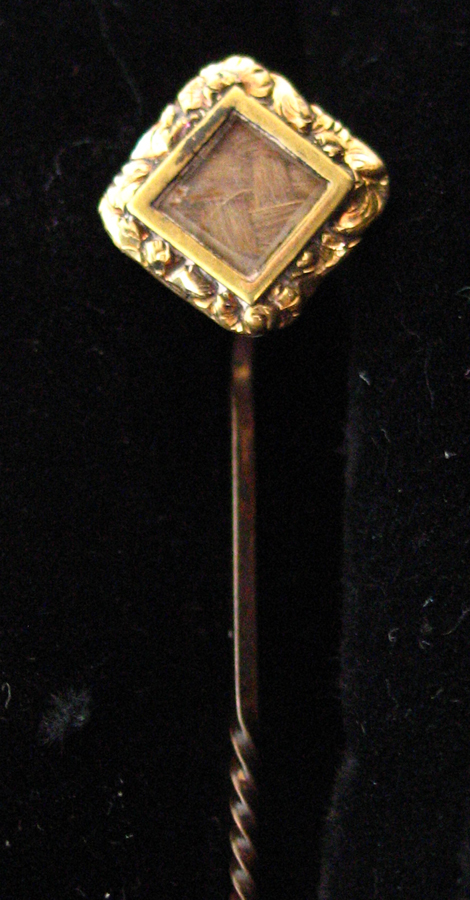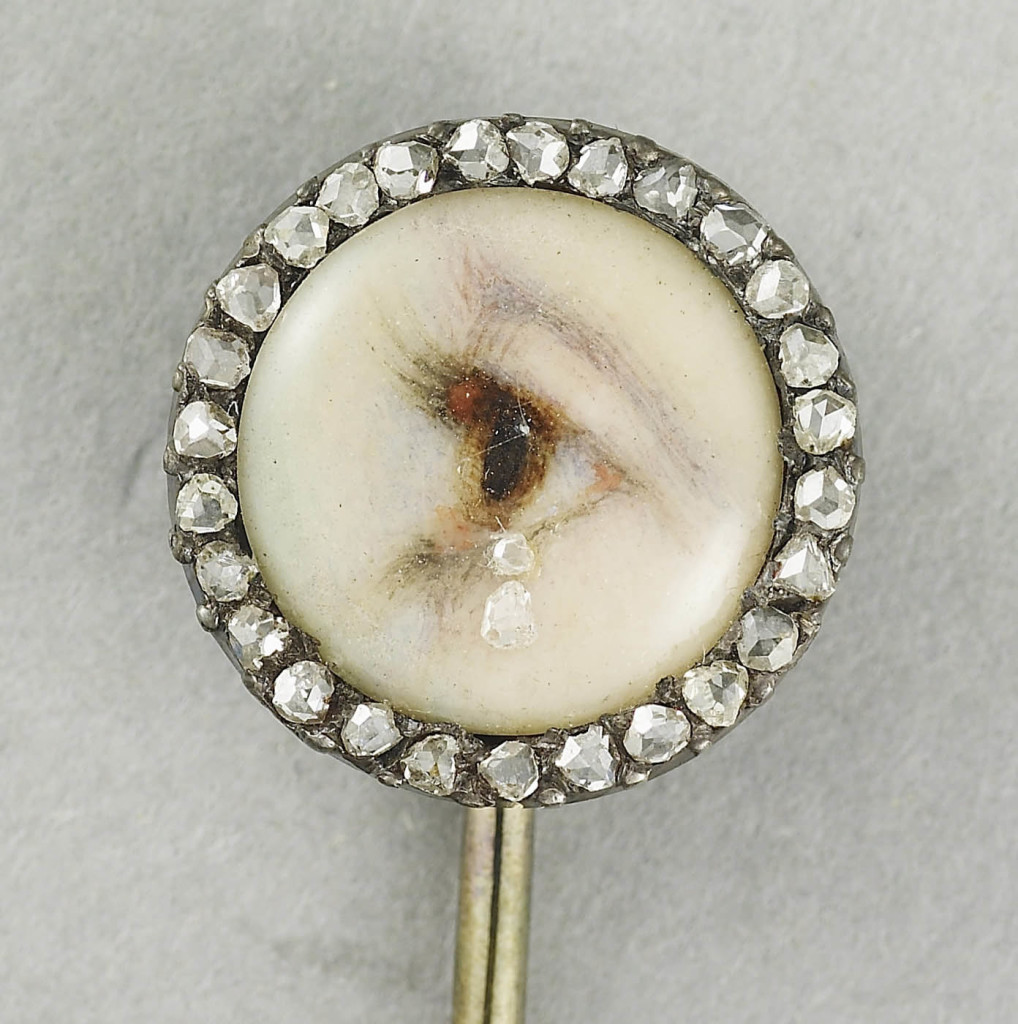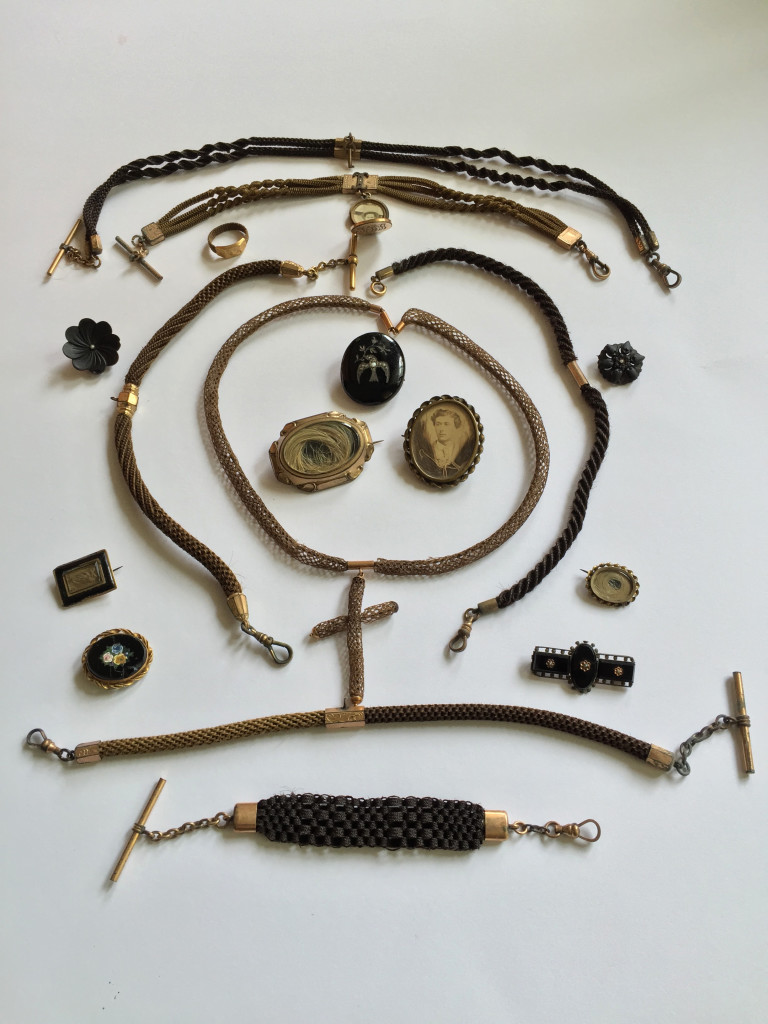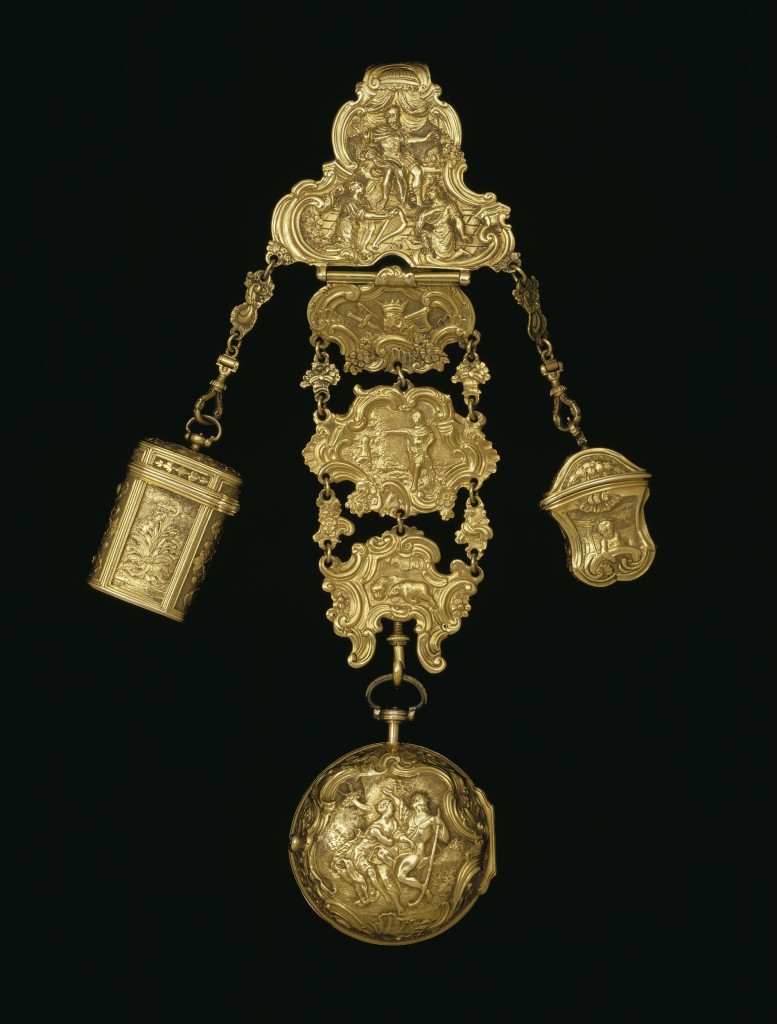Memorial Stickpin With Gothic Revival Flair
Stick pins can be dated to the latter half of the 17th Century and were a common accessory, but are hard to find today. Gold wire cipher, hair and silk with the common symbols of the late 17th century (skulls, cherubs, crossbones) under a Stuart crystal evolved with the times, as their use rarely strayed from fashion. Victorian pins with black enamel were common for their time, often with ‘In Memory Of’ written on them.
As with understanding jewels over time, one must look to the style that defines it. It is within the style and design of a piece that can put it at a certain age or time, which tells a tale of how and why a jewel, or accessory, was worn. Costume and fashion are cultural and personal identifiers, setting one culture or person apart from the rest. That is why jewellery, as an accessory, is so important to classify as a statement of a culture. What could be worn in place of only a short distance away from another could be as fundamentally different to a culture as language. Society creates and changes boundaries, be they socio-political all the time, but fashion and design are the fabric which weave cultures together.
Here, this stickpin reflects the early 19th century and the emerging Gothic Revival styles that adapted much of the elaborate floral motifs of the late Neoclassical period, a time when the opulence of the late 18th century was reducing in size and increasing in smaller detail on jewellery. This, along with the change in allegorical symbolism painted on ivory or vellum and set in a ring or pendant, to focus upon a gem (the ‘magical properties’ of gems) and the importance of the microcosm of gem and floral symbolism, reflects the changing society of the time.
For those who want to find out more about this period, please read the articles:
Gothic Revival in Culture and Jewellery: Part 1, c.1740-c.1850
Gothic Revival in Culture and Jewellery: Part 2, c.1850-c.1900
Gothic Revival in Culture and Jewellery: Part 3, Breaking Perceptions
Which will elaborate more on how society and culture were changing and how this was represented in jewellery.
Fashion is the other important factor to recognise, so the following articles are essential to note the reliance on Court to define the standards of culture that necessitated these jewels:
Knowing Your Fashion, Mourning Fashion in the 17th-19th Centuries







